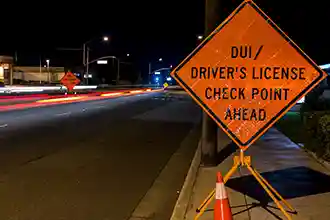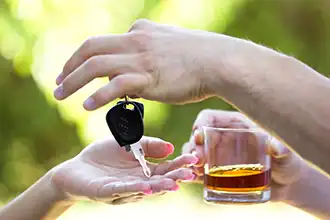
Category: DUI Defense
Category: DUI Defense
What is the Difference between a DUI, DWI, OMVI and OVI?
- September 16, 2024
- DUI Defense
Did you know there’s no real difference between the terms DUI, DWI, OMVI, and OVI? Ohio’s used all of these acronyms at one point or another in our history. Check out the timeline below and what they stand for here! Call our DUI and criminal defense attorneys in Cincinnati today if you have questions, we can help.[ ... ]
What Happens to you at 0.08 Blood Alcohol?
- September 13, 2024
- DUI Defense
View our infographic describing what could happen to you at 0.08 BLC! Click here to calculate your Blood Alcohol Content using our BAC Calculator![ ... ]
Infographic: Field Sobriety Tests
- September 10, 2024
- DUI Defense
Being pulled over under suspicion of a DUI/OVI can be terrifying. If you decide to participate in a field sobriety test, you can expect to do and potentially all of the following. See below to learn more:[ ... ]
Should the Legal BAC Limit Be Lowered?
- September 5, 2024
- DUI Defense
The National Transportation Safety Board (NTSB) has recently suggested that the blood alcohol content (BAC) limit for determining DUI (driving under the influence) should be lowered from .08% to .05%. In other words, the NTSB suggests that drivers don’t need to hit that .08% BAC limit in order to be considered risks to themselves and other drivers on the road. Cincinnati news station WLWT News 5 recently covered the issue, and the DUI attorneys[ ... ]
Woman Beats DUI Charge, Argues Her Body is a Brewery
- September 1, 2024
- DUI Defense
A New York woman beat a DUI charge in late 2015 after her lawyer argued her body is a brewery. In fall 2015, officers arrested the woman and took her to the hospital after she blew a .40 BAC, an extremely lethal level. The hospital wanted her immediate release because she was displaying no signs of intoxication. Upon the woman’s lawyer’s investigation, the[ ... ]
Most Dangerous Days of the Year
- August 25, 2024
- DUI Defense
Disaster can strike at any moment – even on one of the most joyous days of the year. Believe it or not, holidays are some of the most dangerous days for DUI accidents – and it is no wonder considering the non-stop barrage of marketing and advertising of alcohol products leading up to these annual milestones. If you are like most, you are a cautious and careful driver 365 days of the year. However, as the following article will detail, there are ce[ ... ]
Know your Limits: How much Alcohol is in Your Favorite Craft Beers?
- August 20, 2024
- DUI Defense
The craft beer revolution has taken Cincinnati, Ohio by storm. From MadTree to Rhinegeist, Braxton Brewery to Listerman’s, these breweries have made the Queen City a destination for quality craft beer. Options are endless; individuals flock to these breweries and request them at local bars because of the unique taste and/or seasonal flavor, but they sometimes forget: these local craft beers are high in alcohol content. And you have to remember; one beer[ ... ]
Has Uber decreased drunk driving incidents?
- August 16, 2024
- DUI Defense
The numbers don’t lie: The rise of Uber and other ride-sharing services is saving lives. Report after report is showing that this is true. We have compiled some of the research results right here for you: According to a recent Entrepreneur article, Temple University researchers found that Uber’s entry into California markets reduced DUI deaths between 2009 and 2014. On average, the number of alcohol-related driving deaths decreased by between 3.6[ ... ]
SCOTUS to Rule on Drunk Driving Tests
- August 13, 2024
- DUI Defense Ohio Driving Laws
On December 11, the Supreme Court of the United States (SCOTUS) agreed to hear several cases that could change drunk driving investigations nationwide. These cases relate to whether or not a search warrant is necessary before forcing someone to take a breath or blood test to measure his breath or blood alcohol content (BAC). If SCOTUS rules that forced BAC testing without a search warrant is unconstitutional, the decision would force changes in Ohio law. Wha[ ... ]
DUI Across the Tri-State
- August 9, 2024
- DUI Defense
Kentucky. Ohio. Indiana. If you live in Cincinnati or Northern Kentucky, you probably cross state lines quite frequently. Even though our states are neighbors, that doesn’t mean we have the same laws. If you drive in and out of Cincinnati, Northern Kentucky, or cities nearby in Indiana, it is important to know that each state has different penalties for a DUI. If you get a DUI in Ohio, and within five years, you get another DUI, this time in Indiana, yo[ ... ]










